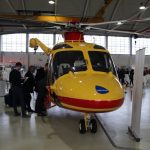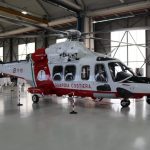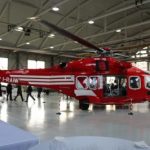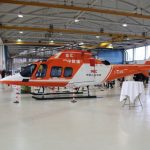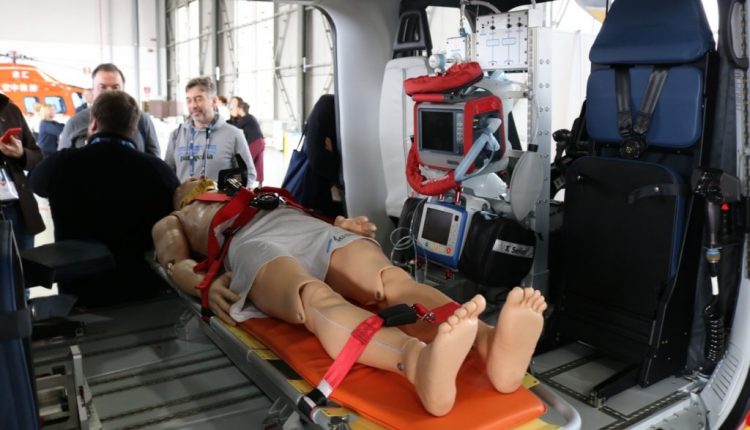
HEMS and SAR: will medicine on air ambulance improve lifesaving missions with helicopters?
Too many different helicopters and too little attention to the healthcare world’s requests. This was the focus of REMOTE, the congress about patients’ transport on helicopters (HEMS and SAR) organized in Vergiate, Italy. A very important meeting that settled many important points in air ambulance needs worldwide.
In 2018, SIAARTI, in cooperation with Leonardo Helicopters, organized the REMOTE congress in order to sensibilize and raise awareness on air ambulance (HEMS and SAR) world’s needs. They brought together more than 600 physicians from all over the world. Medicine applied to technology can help the most important aeronautic companies in building, even more, performing aircraft to save patients’ life.
REMOTE Congress for HEMS – Saving lives is not a “request”
Saving lives requires continuing research, improving solutions and technologies. The aim of SIAARTI and Leonardo Helicopters was very clear: gather physicians, medics, EMTs, and nurses involving them in a journey in the HEMS world looking at its future.
This is the focus: today air ambulances are studied to transport people, and things and every manufacturer adapts shape and type according to its need. An example? The exposure of a rescue AW189 for HEMS service in Japan, an AW139 of Italian Coast Guard, the new AW169 for Babcock, the little AW119 single-engine and the AW609 for special rescue, inside Leonardo’s hangar in Vergiate.
In the exterior part, the scene was kept by the HH139 for Italian Airforce, with the presence of an NH-90 of Italian Army, used for out-of-hospital rescue in tactical fields.
An aircraft thought for HEMS and SAR and not HEMS and SAR thought to become an aircraft. Which is the difference?
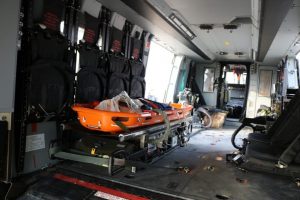
To make a helicopter as mobile Intensive Care Unit that flies to the patient to give the best treatments, aircraft must be thought in a different way. The answer arrived exactly during the REMOTE congress, where SIAARTI and Leonardo Helicopters highlighted to all most important scientific societies the importance to define the real duty of HEMS to make easier rescue operations. The 600 specialists gathered around a table to discuss this peculiarity.
“About 30 years ago an out-of-hospital ultrasound evaluation was impossible to imagine”, explained doctor Maurizio Menarini, SIAARTI project manager and director of the Anaesthetic and Resuscitation Department at Maggiore Hospital in Bologna.
“Today, the E-FAST travels with the critical care physician of the emergency medical service. Other practices like ECMO are landing in out-of-hospital settings and we have to find a way to define which practices are the best for the helicopter emergency service, to guarantee the highest ability and efficiency to the rescue team in emergency scenarios. We have to build a valid and recognized response because the patient must be rescued with the best quality available as soon as possible.
Today, a doctor must have the possibility to anticipate as soon as possible all the necessary manoeuvres to save the patient’s life, like compressions, FAST, intubation, ECG and so on. When the traumatic patient arrives at the ER will be accepted in the operating room immediately because exams are already been done during the flight or on the emergency site.”
What more to improve HEMS and SAR performance?

At this point, Leonardo put its knowledge and project ways. Luca Tonini, Sales Manager for Leonardo Helicopters said: “I thank Gian Piero Cutillo, President of Leonardo Helicopter Division to have believed in this project focused on the alignment with the physicians. We always thought about transportation, but now we are working on a brand-new concept. We involved SIAARTI, AROOI EMAC, CNSAS and the Red Cross of Bologna that is hosting a cabin simulator of the AW169 and not only: it will be soon available in the University of Milan. We will build the air ambulance of the future, it will be suitable for the patients’ needs, common people who have to be saved all over the world with the same care.
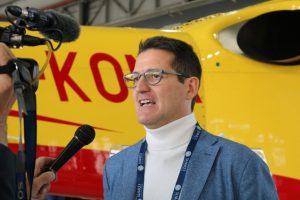
REMOTE is not only this, it is an international event that allows the evolution of air ambulances at an excellent level. Today we bring together all the medical experts of the planet because it is a perfect point of starting, a union. Leonardo is a sort of glue for this evolution, for this helicopter that will be built around the patient. As engineers, we can translate what doctors will explain to be fundamental, in order to make the helicopter rescue a survival solution for patients until the arrival at the hospital.”
HEMS and SAR. This is an improvement, but what about the costs?
This is an international project with an ambitious goal. Of course, we have to consider the financial and social points of view. How much could be building such an advanced and detailed system? How much would this hit economically, the development of this kind of a flying mobile intensive care?
“The cost changes according to the quality –
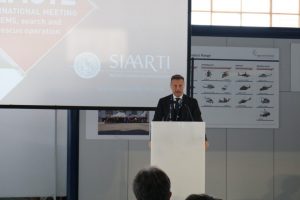
Menarini explains – and if we can improve the system within a determined range of performance, we will be able to spare, because the ergonomics of the systems is fundamental. When a medical device reaches such development to be able to be used also in the out-of-hospital setting we can calculate the analysis of costs and advantages. ”
After all this type of project help in reducing projecting costs of air ambulances: “As we know where to put most attention, how to improve safety and quality, we can improve also the work on the life duration of the aircraft. Vibrations, structures, utilization range, are standards that must be fixed during the project and last for 20 or 30 years. This is why, if we manage to provide changes and structural projects, we can reduce projecting and certification costs. Medics support in this sense is essential to give us a method and an important heritage, available to anyone.”
If courage, ambition, and virtue expended in this project will be carried on, we will really have the first medical advanced protocols for the helicopter rescue to apply at an international level.
READ ALSO
Search and Rescue in the UK, the second phase of SAR privatization contract
Updates on rapid sequence intubation from Australian HEMS
Folding drones for SAR operations? The idea comes from Zurich
HEMS – Doing rescue with the Northern Norway JRCC
REFERENCES



